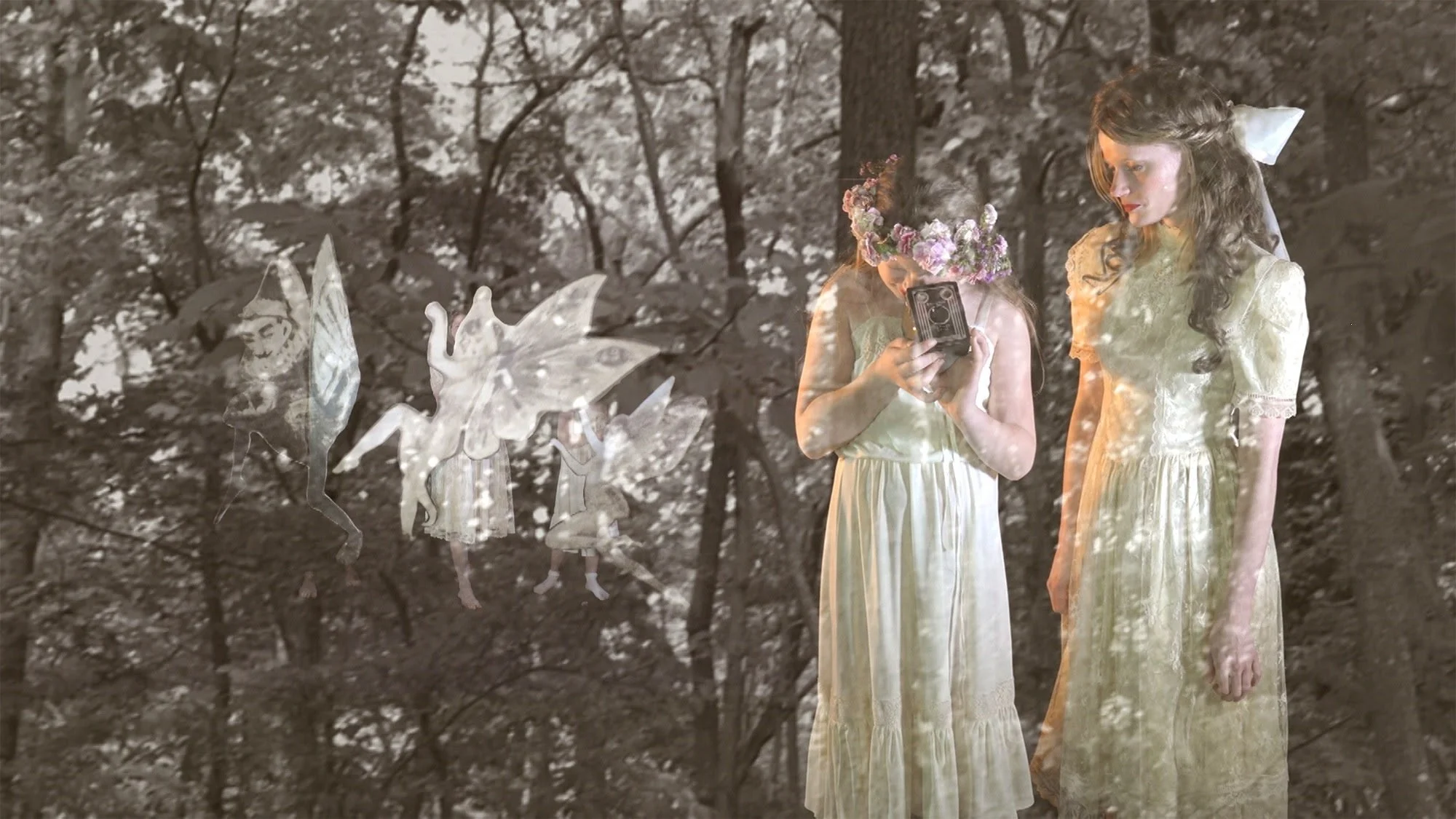Boca Raton Museum’s “Smoke and Mirrors: Magical Thinking in Contemporary Art”
In the Event of Moon Disaster, installation by Francesca Panetta and Halsey Burgund
By Debra Griboff (Posted 1/28/24)
Fake imagery isn’t new. It’s just that deepfakes, thanks to AI, are becoming far more sophisticated. All traffic in the world of hoaxes, alternative facts and misinformation — whether its spiritualism or 21st-century political-conspiracy theories.
Now, the Boca Raton Museum of Art is drilling down into the phenomenon in “Smoke and Mirrors: Magical Thinking In Contemporary Art.”
The exhibit runs through May 12.
Curated by Kathleen Goncharov, it features 30 artists, including Tony Oursler, Urs Fischer, Sarah Charlesworth, Kristin Lucas, Jim Shaw and Jane Hammond and The Yes Men.
What’s fascinating about the artists’ renderings of deepfakes is they often reveal a greater truth about the duplicity of the producer and the gullibility of the audience. Even Arthur Conan Doyle, Sherlock Holmes’ eminent creator, endorsed the fake photography of the Cottingley Fairies in 1917, claiming it as evidence of psychic phenomenon.
Today’s hoaxes, usually posted on social media, utilize new technology and champion lethal conspiracy theories, but their genesis begins a century earlier.
What “Smoke and Mirrors” neatly illustrates is that magical thinking remains part of the human story. Be it the early 1900s, when fake mediums, seances and stage magic proliferated, or the lies and distortions that propel political extremism and violence today, the exhibition investigates how dangerous hoaxes can be. Worse, to believers, they are often impossible to discredit, whatever the evidence.
Irvin Lippman, Boca Raton Museum’s executive director, said: “The correlation between magic and art-making has always loomed large, and this exhibition takes this idea one step further, revealing strong connections between today and earlier periods in history when crises led to magical thinking.”
The exhibit’s artwork is clever, engaging and well-timed. In an election year, attention to visual and verbal manipulation is particularly critical. The museum will also regularly update a video screen titled DEEPFAKE-O-RAMA with the latest deepfakes in the political news cycle during the run of the exhibition.
Oursler, a noted video artist, takes include conspiracy, mysticism, narrative evolution and facial recognition technologies. Viewers often get disoriented entering his installations. For several decades, the artist has amassed a vast archive of more than 3,000 historical materials pertaining to the paranormal fringes, pseudo-science that connects to cults, and the intersection of science and the occult.
One of his installations, “Charles Doyle Fairy Painting,” is based on his fantastical paintings of Victorian-era fairies and other fantasy themes.
Imponderable, (film still) by Tony Oursler
Conversely, Francesca Panetta and Halsey Burgund’s installation In Event of Moon Disaster was made using sophisticated deepfake technology. In 1969, most of the world celebrated the Apollo 11 crew’s first successful moon landing, the exceptions were conspiracy theorists that claim it was staged. In this work, the artists ask: What would have happened if the mission had gone wrong?
Their “Moon Disaster” installation reimagines this seminal event to illustrate the possibilities of deep-fake technologies. In the alternative history, visitors will time-travel to a Florida living room where Richard Nixon appears on a television set to announce the tragedy.
“We hope that our work will spark critical awareness among the public. We want them to be alert to what is possible with today’s technology, to explore their own susceptibility, and to be ready to question what they see and hear as we enter a future fraught with challenges over the question of truth,” said Panetta, project co-lead/XR creative director, MIT Center for Advanced Virtuality.
On the business front, the artists/activist duo known as The Yes Men have been exposing corporate malfeasance since the early 1990s. They often impersonate government officials, corporate officers and salesmen at real-life events.
In addition to videos of the pair’s many hoaxes, their installation features the inflatable Survivaball, an imagined “new Halliburton product” The Yes Men presented at an insurance conference about catastrophic loss, tricking the attendees into believing it was real.
“Art itself is a process of alchemy, transforming physical medium into illusions of beauty, messages that have the power to both inspire and manipulate audiences,” says Lippman.
If You Go:
Boca Raton Museum
501 Plaza Real
Boca Raton Florida 33432
561-392-2500
bocamuseum.org/

